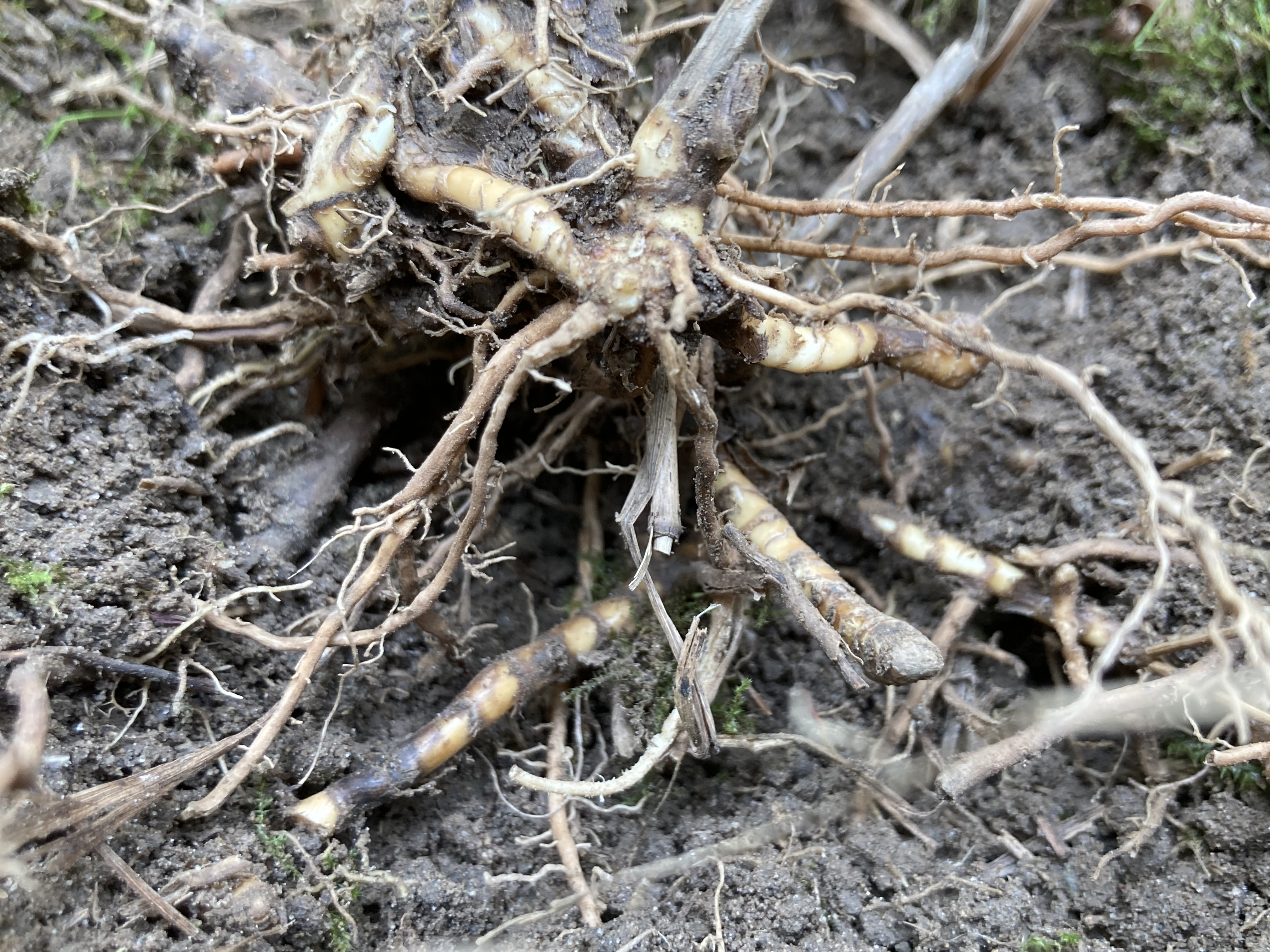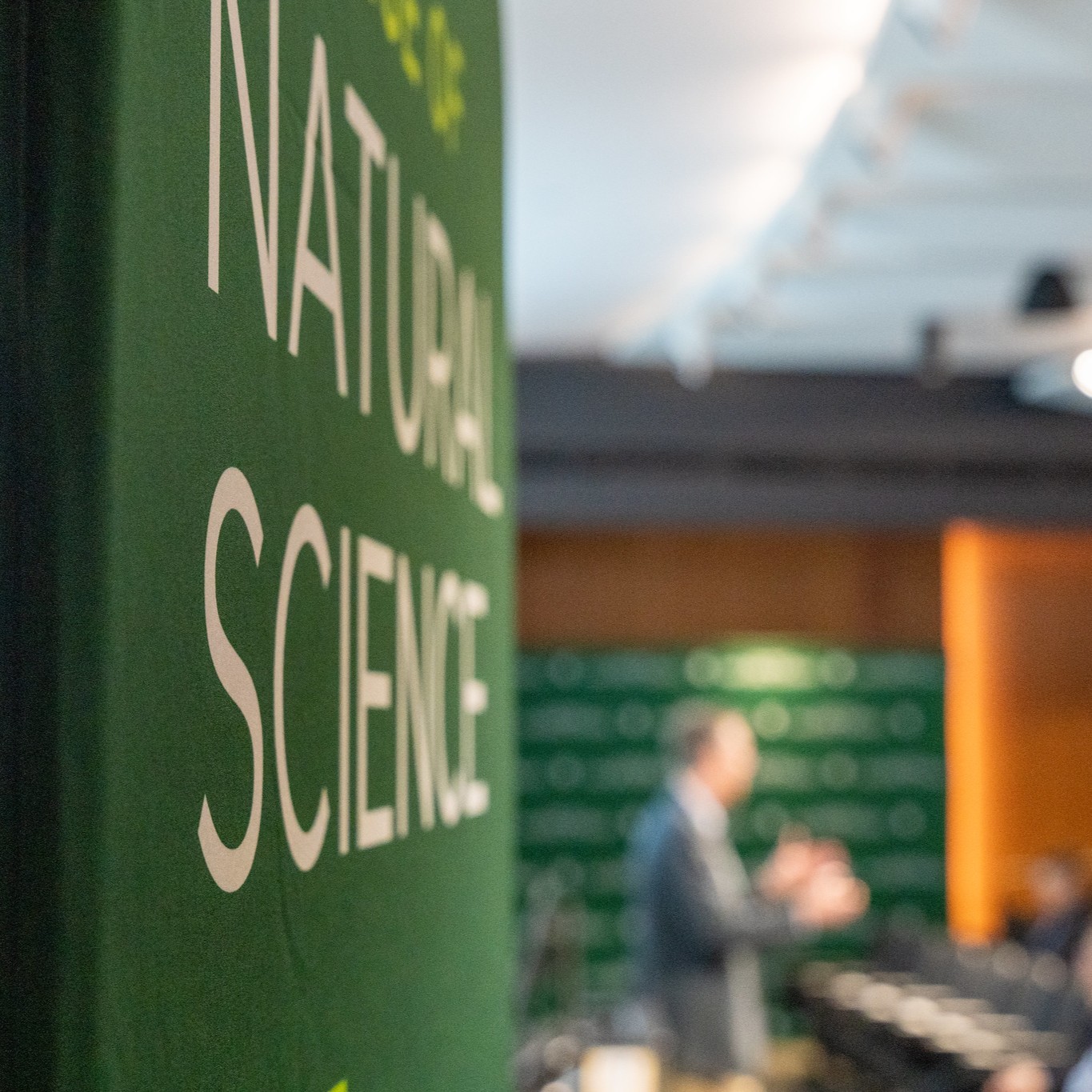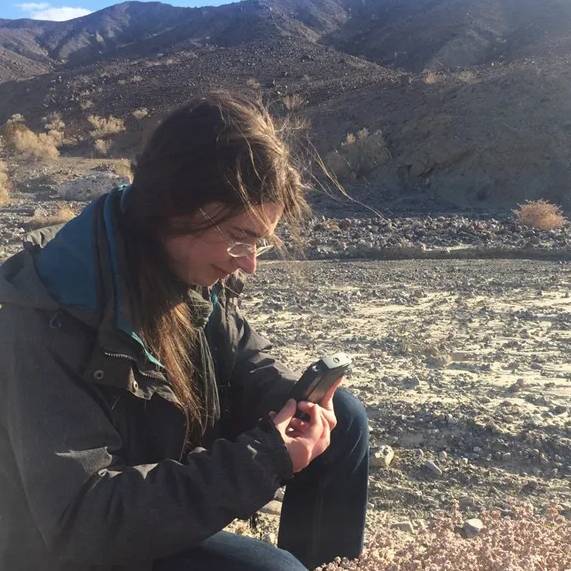Growth and regrowth: What happens to switchgrass when food reserves are depleted?
Article Highlights
- Like the bear getting ready for hibernation, plants need somewhere to put all the carbohydrates they produce during photosynthesis.
- Research from the Walker lab looks at what happens to switchgrass when its carbohydrates reserves are purposefully depleted by 30%.
- They found that the depletion of carbon reserves did not affect the final size of the plant, and it was able to restock up on its reserves by the end of the growing period.
As potential for biofuel, switchgrass is a perennial plant that is of great interest to researchers. Scientists from the MSU-DOE Plant Research Laboratory (PRL) Walker lab are looking at how these plants regrow, even when regrowing with less than its usual carbon storage.

Switchgrass rhizome, an
underground stem system from
which switchgrass grows.
By Mauricio Tejera-Nieves
Perennials are plants that will come back in the spring, unlike annuals which die after one growing season. In order for perennials to come back, they need to store enough food for the winter, like a bear getting ready for hibernation by gorging itself on fish.
In a previous study, researchers from the Walker lab looked at what stops switchgrass from growing. Why do these grasses reach a certain size and stop in the middle of summer? What’s to keep them from growing indefinitely?
Click here to read the full article



